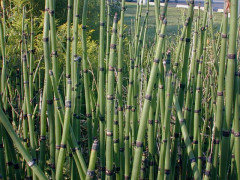Foliage Pro and Pro-Tekt
DelWH
11 years ago
Featured Answer
Sort by:Oldest
Comments (32)
moonie_57 (8 NC)
11 years agoNo-Clue
11 years agoRelated Professionals
Holly Springs Landscape Architects & Landscape Designers · New Bedford Landscape Architects & Landscape Designers · Havre de Grace Landscape Architects & Landscape Designers · Saint Matthews Landscape Architects & Landscape Designers · Wixom Landscape Architects & Landscape Designers · Middletown Landscape Contractors · Ashburn Landscape Contractors · Duarte Landscape Contractors · Goodlettsville Landscape Contractors · Goodlettsville Landscape Contractors · Tinton Falls Landscape Contractors · Bull Run Specialty Contractors · Ft Washington Siding & Exteriors · Milford Siding & Exteriors · New Britain Siding & ExteriorsDelWH
11 years agodaogirl - SoCal Zone 9
11 years agoNo-Clue
11 years agoDelWH
11 years agomoonie_57 (8 NC)
11 years agoDelWH
11 years agoLoveplants2 8b Virginia Beach, Virginia
11 years agoDelWH
11 years agoLoveplants2 8b Virginia Beach, Virginia
11 years agoNo-Clue
11 years agoLoveplants2 8b Virginia Beach, Virginia
11 years agobeachplant
11 years agobeachplant
11 years agohoneybunny2 Fox
11 years agobeth-noobfrommd
9 years agonewgen
9 years agotapla (mid-Michigan, USDA z5b-6a)
9 years agobeth-noobfrommd
9 years agoplumejunkie
9 years agoTravis in PHX (9b)
2 years agotapla (mid-Michigan, USDA z5b-6a)
2 years agoTravis in PHX (9b)
2 years agotapla (mid-Michigan, USDA z5b-6a)
2 years agoTravis in PHX (9b)
2 years agotapla (mid-Michigan, USDA z5b-6a)
2 years agoTravis in PHX (9b)
2 years agotapla (mid-Michigan, USDA z5b-6a)
2 years agolast modified: 2 years agoTravis in PHX (9b)
2 years agotapla (mid-Michigan, USDA z5b-6a)
2 years ago
Related Stories

DIY PROJECTSArrange a Gift Floral Bouquet Like a Pro
For a fall gift bouquet that looks expensive but is (almost) dirt cheap, just follow this step-by-step guide
Full Story
FARM YOUR YARDHow to Grow Vegetables in Containers
Get glorious vegetables and fruits on your patio with a pro’s guidance — including his personal recipe for potting mix
Full Story
LANDSCAPE DESIGN7 Great Trees for Summer Shade and Fall Color
These landscape-pro faves straddle the seasons beautifully. Could one enhance your own yard?
Full Story
LANDSCAPE DESIGNHow to Hire a Landscape Architect
Find the best fit for your landscaping project with this guide to evaluating and selecting a pro
Full Story
PRODUCT PICKSGuest Picks: Beautiful Backsplash Tiles for Every Budget
Explore 20 tiles curated by a pro interior designer, ranging from everyday affordable to art for the kitchen
Full Story
FALL GARDENINGHouzz Call: Show Us Your Autumn Views
Share your pictures of fall foliage and decor in the Comments. Your photos may be featured in an upcoming story!
Full Story
GARDENING GUIDESGreat Design Plant: Grow Blueberries for Their Fruit and More
Eastern gardeners should consider growing blueberry plants for their delicious fruits, bee-friendly spring blooms and brilliant fall foliage
Full Story
GROUND COVERSGround Force: 10 Top Ground Covers for Your Garden
Protect your soil from weeds and drought this summer with a living mulch of ground covers
Full Story
LANDSCAPE DESIGNSmall Garden? You Can Still Do Bamboo
Forget luck. Having bamboo that thrives on a wee plot just takes planning, picking the right variety, and keeping runners in check
Full Story
LANDSCAPE DESIGNBoxwood Alternatives Bring the Chelsea Flower Show to You
Don’t let box blight limit your plans to borrow garden design ideas from the renowned British event
Full Story







tapla (mid-Michigan, USDA z5b-6a)